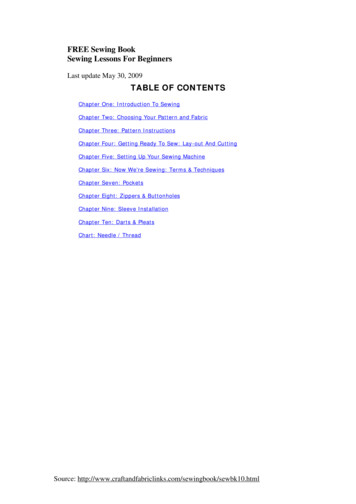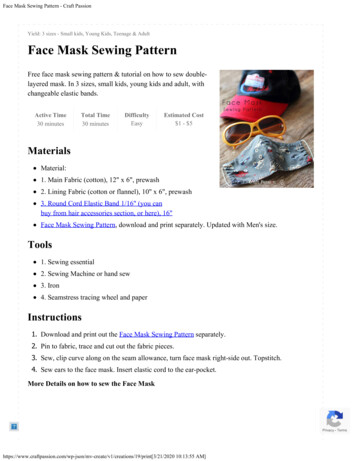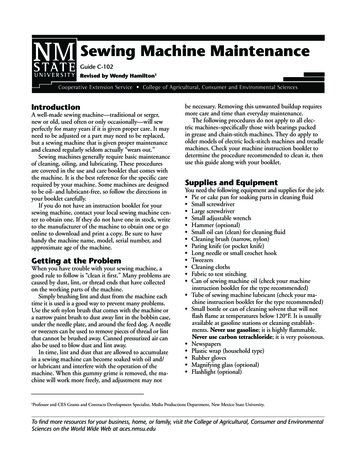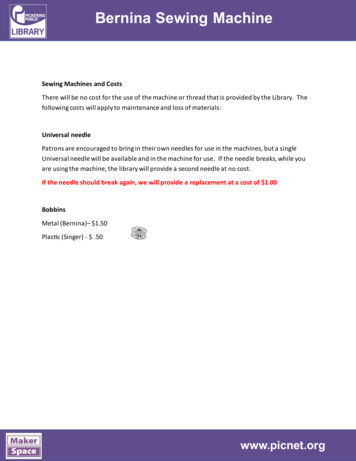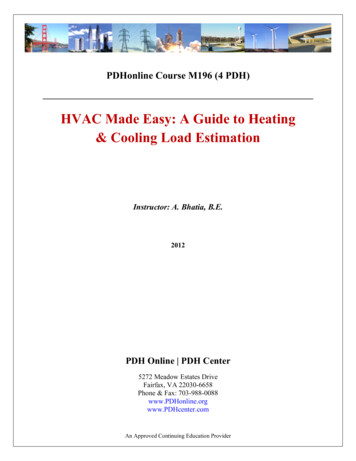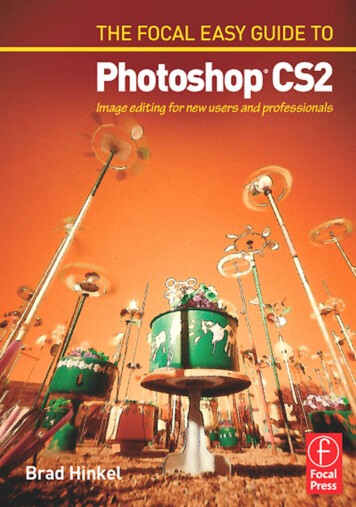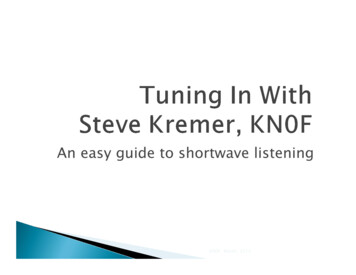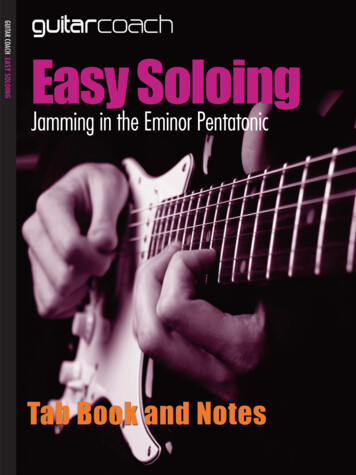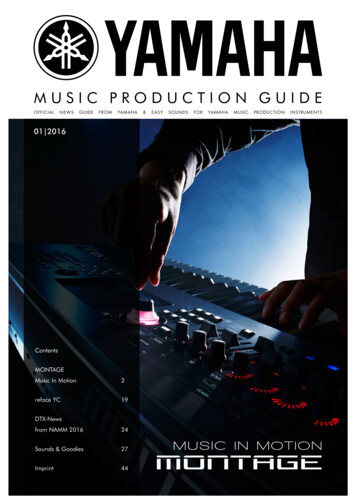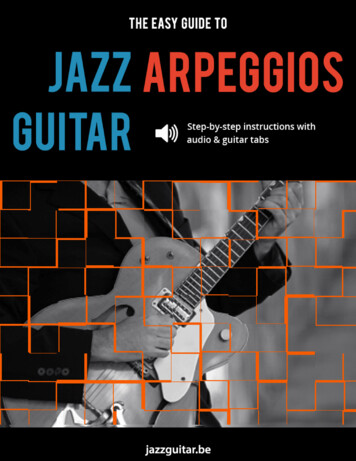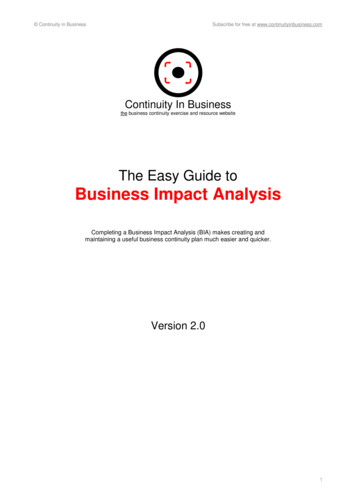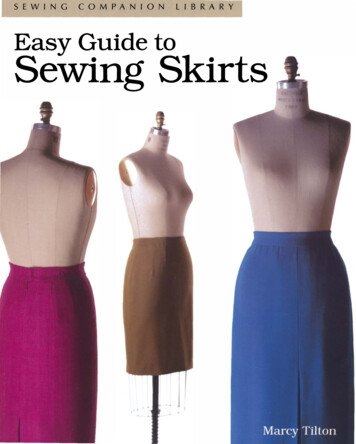
Transcription
SEWINGCOMPANIONEasy Guide toLIBRARYSewing Skirts
1Which Skirtto Make?Anyone can sew a skirt, so if you're just learning, a skirt is theperfect starting point. You can get the color, style, and fit youwant, and the length that's exactly right for you.The number of choices in the pattern books may seemoverwhelming at first, but there are really only a few skirt stylesand silhouettes to choose from. In this chapter, you'll learn how todetermine which styles work best on your figure and which stylesand fabrics are best for your skill level.A simple style and a beautiful fabric are the best combination forfast, easy, and successful sewing Uust look at the skirts in anyCalvin Klein collection). When you want to make a skirt quickly,stay at or just below your skill level and use the techniques anddetails that you've mastered. If you want to stretch your limits,choose skirts with some new element-a different zipperapplication, a more fitted style, or a more challenging fabric.The more difficult and time-consuming skirts to sew are thosethat are fitted at the waist, high hip, and full hip, or that havemore pattern pieces and construction details, such as pleatsor pockets.
Choosing the Best StyleBegin in your closet. Try on your favorite skirts.Make notes and take measurements.Decide which styles and silhouettes look best on you. What arethe most flattering lengths? Which waistband styles, lengths, andwidths are most comfortable? What is the hip measurement of thefitted skirt that looks best on you?Next, take your tape measure to the stores. Try on a variety ofskirts to see what works for you and what doesn't.(Ido this atleast twice a year-late August and March are when the storeshave the best seasonal selections.) Again, make notes of the mostflattering lengths, hem widths, waistbands, and so on. Check thefabric types-this will help you learn which fabrics work best forwhich styles. If you find a skirt in the stores that looks fabulouson you, you'll probably be able to find something similar in thepattern books.Wh at's Best for Me?Skirt styles fall into a few basic categories: straight, A-line orflared, gored, pleated/tucked, gathered, wrap, and bias. But howwell a particular style will look on you depends on your figuretype. Some styles look good on almost anyone, while others seemto suit a particular body shape. The so-called "average" or slim,well-proportioned figure can wear almost any style of skirt. Fourof the other common figure types and the styles that most flatterthem are described on the facing page.The chart on pp.lO-13 describes each of the basic skirt styles, thefigure type best suited to each, the range of sewing skills required,and the recommended fabrics. For easy reference, each skirt styleis coded with the appropriate figure symbols. The page numbersin parentheses direct you to more detailed discussion of thesuggested style variations and design details.8Which Skirt to Make?
F I G URE TYPES[I]x or HourglassThe hourglass figure looks balanced,[j]H or RectangularThe rectangular figure has fewcurvaceous, and wel l defi ned. The shou lders and h i pscurves and not m uch waist l i n e defi n ition. Theappear to be the same width, and the bust and h i psshou lders and the h i ps are s i m ilar i n width, whichare about lOi n . to 12 i n . larger than the waist (anmakes the figure appear balanced. If you have ahourglass figure m ight measure 38-27-38, forrectangular shape, most l i kely your clothes usuallyexample). A woman with th i s shape can wear bothhang wel l . You can wear skirts that are sl i m-fitti ng, aswel l as ones that are gracefu l and flowing.straight and flared styles. If you're fu l l figured,however, you ' l l look better with stra ight l i nes thatm i n i m ize your curves, such as those on a skirt withvertical seams.[l]A or PearOn a pear-shaped figure, the shoulders[!]Y or WedgeThe wedge figure has shoulders that areappear narrower than the h i ps or th ighs, the bust i sbroader than the h i ps, and the upper arms may besmall, a n d t h e waist is sma l l i n proportion t o the h i ps.heavy. Some women develop a wedge shape as theyage; others are born with these proportions. If youIf you are pear shaped-most women are-avoidb u l ky skirts and severe sl im-l i ne skirts. Flared, A-l i ne,gored, and bias skirts are most flattering. Tohave a wedge shape, s l i m skirts are made for you .Gored and bias skirts are also good choices.camouflage fu l l h i ps, choose soft, flowing fabrics, softpleats, and long, gracefu l skirts.Hourglass figurePear figureRectangular figureWedge figureChoosing the Best Style9
STYLES, SKILLS, AND FABRICSSkirttypesStyle andfigure notesRequiredskillsSuggestedfaoricsSTRAIGHTMore than any otherstyle, straight skirtsreveal the figure. Anoversized top worn overa straight skirt, however,works wel l on figureswith proportional ly largehips.Straight skirts fit closer tothe body than any otherstyle, so it's important tohave some experiencewith fitting.For fitted, darted styles,the best fabrics arem idweight, sometimestermed "bottomweights" that is, for skirtsor pants.[I][j][!]A straight skirt is cut straight(or tapers in slightly) from thef u l l hip to the hem.Short straight skirtsending just above theknee are the mostflatteri ng. Super-shortstraight skirts, such asthe micro-mini, are beston slim, long-l eggedfigures.Long straight skirts canhave an air of chic, butlook dowdy if they'rethe wrong length.They're best if they endwhere the leg begins totaper.Some French designersuse patterns that areslightly "pegged" at thein.hem-cut aboutnarrower than the f u l lh i p at each side seam. Apegged skirt tapers fromfu l l hip to hem, creatinga curvy, pleasing line foral most any figure thatcan wear a slim skirt.1/210Which Skirt to Make?A traditional tailoredstraight skirt might havedarts, soft pleats, curvedseams, a zipper, fittedwaistband, vent or kickpleat, and a l i ning.Easy: A slim skirt with apul l-on e lasticizedwaistband (pp. 89-91 ) isan ideal beginner'sproject. A French vent(p. 72) and lining(pp. 82-85) are optional .Average: Soft front pleats(pp. 6 1-63); darts (p. 59),gathers (pp. 64-65), orelastic (pp. 96-98) in theback; machine-stitchedzipper (pp. 78-79) atcenter-back seam;optional French vent(p. 72) and lining(pp. 82-85).Advanced: Darts(pp. 59-60) in front andback; shaped darts forbetter fit or pockets(pp.66-69); hand-pickedzipper (p. 79); lining(pp. 82-85).The best choices inwools are crepe,lightweight gabardine,fine tweeds, and twills.Avoid wool flannel;most kinds are too stiffand heavy for any skirt.Other fabrics that workwel l are linens, sil k linenor b lends, light tweeds,brushed cottons, andden i m-weight cottons.For pul l-on straightskirts, fabrics should besoft and fl uid to avoidexcess bu l k at the waistand high hip. Silks, wooljersey, chal l is, and rayonare good choices.
SkirttypeStyle andfigure e A-line or flared skirtis probably the best stylefor most women. Itworks well on figureswith a small waist inproportion to the hips;adds the i l l usion of awaist on straight up-and down figures; and maybe the only style thatworks on fu ll-hippedfigures.A-line skirts may befitted at the waist, highhip, and fu l l hip, whichrequires ski l l in fitting.They can also be fu l lwith a n el asticizedwaistband-super-easyto sew and fit.Because A-line skirts areusual ly flowing, choosefabrics that drape andmove nicely.[IJ[j][I]An A-line skirt is fu ller atthe hem than at the waist.Check the shapes of thepattern pieces on theinstruction sheet. Theskirt should be flared, notrectangu lar. If thelengthwise grain is atcenter back or front, youmay want to alter it for amore flattering effect.Also check the finishedskirt width at the hem tobe sure it's exactly whatyou want, based on themeasurements you'vetaken of garments in yourwardrobe or in stores.Easy: Full skirt with pu ll on elasticized waistband(pp. 89-91); gathers(pp. 64-65) or soft pleats(p. 61); machine-sewnhem (pp. 106-107).Average: Fitted orpartially elasticizedwaistband (pp. 96-98);zipper (pp. 74-8 1);pocket detailing(pp. 66-69); curvedseams (p. 53).For more fitted styles,choose wool crepe,double knits, lightgabardine, rayon andsilk tweed, brusheddenim, suede, sil k linen.For full, gathered, orsoftly pleated flaredstyles, pick sil kbroadcloth, crepe dechine, rayon, challis,tissue faille, cotton knits,sil k noil, wool jersey.Advanced: Bias cut(pp. 37-39); lining(pp. 82-83); raisedwaistband (p.l 0 1 ); morefitted, but the more fittedthe skirt, the more ski l l sare required t o make it.Choosing the Best Style11
SkirttypeStyle andfigure notesRequiredskillsSuggestedfannesCOREDA true classic, the goredskirt is always in fashion.It's also one of the mostflattering styles. Thevertical lines of a goredskirt create an illusion ofheight and slimness.The more fitted the skirt,the more important yourfitting ability. You' l l alsoneed accurate stitchingand pressing skills toachieve flat, nearlyinvisible seams. Hemscan be sewn by hand ormachine.The best fabrics for thisstyle are fluid anddrapey.[IJ[j][iJ[!]This style consists of four, six,eight, or more gores shapedto flare from waist to hem.A gored skirt can beeither straight or A-line,depending on thecontours of the gores. Ifyou look best in a slimskirt, choose a goredstyle that's fitted at thewaist and hips and thatflares near the hemline.If an A-line is best foryou, choose a skirt withgores that flare fromwaist or high hip.Shaped and curvy goresemphasize the hips.(See pp. 108-109 for tipson constructing a fitted,lightly fitted, and fullgored skirt.)12Which Skirt to Make?Easy: Pul l-on elasticizedwaistband (pp. 89-91);additional ease at waistand hips (p.108).Average: Lightly fittedskirt (p. 1 08); invisiblezipper (pp. 80-8 1 );mach ine-topstitchedhem (p. 1 06)Advanced: Fitted(p. 109); hand-picked orinvisible zipper (p. 79and pp. 80-8 1 ); hand sewn hem (p. 105).Wool jersey, velour, andwool double knits aregood for lightly fittedskirts; wool crepe, silktweed, and fine worstedwool for fitted skirts. Silkcrepe de chine andrayon are also goodchoices.Avoid wool flannel andgabardine.
SkirttypeStyle andfigure notesPLEATED!TUCKEDPleats create a subtlevertical line whilesoftening the figure. Askirt with all-arou ndpleats, however, flattersonly s l i m, narrowhipped figures.[j][!]You can vary the size,n u m ber and placementof the pleats to createdifferent effects.00GATHERED1Il111Gathers emphasize the drapeand movement of soft, fluidfabrics.The position, direction,and depth of the pleatscan be varied from thoseon the pattern to achievethe look that's best foryou . Experi ment.Gathered skirts visuallyadd weight and bulk toany figu re, so chooseyour pattern and fabriccarefu l l y.Beware the rectangu lar shaped "di rndl" skirt,which is fine forchildren but frumpy onmost women . Check thepattern instruction sheetto make sure the patternpieces are narrower atthe waist than at thehem. SuggestedfaoricsR uiredskil sEasy: Soft pleats (p. 61 ).Average: Pressed-downor stitched-down pleats(pp. 62-63).Soft pleats require softfabrics, such as silk ands i l kies, rayon, and jersey.Advanced: A l l -aroundpleats, which areextremely difficu lt to fit.The best choices forpressed- or stitcheddown pleats are crispfabrics, such as l ightgabardine andmenswear worsteds, s i l ktwi ll, and broadcloth .Beginners often chooseto make a gathered skirtas a fi rst project, butgathers take patienceand fussing to get justright.To avoid an u nflatteringpuffy look, use soft, fluidfabrics, such as silk,polyester "si l kies,"rayon, jersey, andchallis.Easy: Gathers created byan elasticized waistband(p. 89); short spans ofgathers.If you're u nsure whethera fabric is too heavy fora gathered skirt, itprobably is.Average/Advanced:Long spans of gathers; am u l ti-tiered, Santa Fe style skirt.Carefu l l y position thegathers (pp. 64-65) forthe most flattering effect.Choosing the Best Style13
Selecting the PatternKeep it simple. The key to success is to begin with a loose fitting style and a beautifulfabnc.As a rule, a garment with fewer pattern pieces requires less timeto fit and sew. Scrutinize the illustrations in the pattern books.Keep in mind that each detail-yokes, pockets, pleats, raisedwaistbands, and intricate seam treatments-adds time andcomplexity to the project.Build your skills gradually. With each new garment you make,plan to add another technique or fitting skill to your repertOire.For instance, once you've made a simple, slim skirt with an elasticwaistband and a machine-stitched hem, you may want to makethe same pattern again, this time adding pockets to the sideseams and hand-stitching the hem. Then you'll be ready for amore challenging pattern, say, a darted skirt with a kick pleat anda fitted waistband.Beyond the Pattern EnvelopeThe pattern envelope contains a lot of useful information, but youhave to know how to interpret it. Pattern illustrations can besomewhat misleading, because the artists' drawings are muchtaller and slimmer than most real women actually are. So keep inmind that you'll probably look very different in the skirt than thefigure in the sketch. Also, if there's a photograph of a designeroriginal, remember that the pattern company does not buy theoriginal pattern, but rather the right to copy the design, so the cutof the garment won't be exactly the same.Don't get distracted by details, such as a skirt pocket or the colorof the garment in the illustration. Look at the lines of thedrawings on the back of the pattern envelope. These will show youthe skirt's basic silhouette-that is, whether it is straight, flared,or gathered.14Which Skirt to Make?
Open the envelope, if the retailer will allow you to, and check theline drawing on the pattern instruction sheet. This is usuallylarger than the one on the pattern envelope, and the details areeasier to see. Also check the shape and grainline position of thepattern pieces.Check
to Make? Anyone can sew a skirt, so if you're just learning, a skirt is the perfect starting point. You can get the color, style, and fit you want, and the length that's exactly right for you. The number of choices in the pattern books may seem overwhelming at first, but there are really only a few skirt styles and silhouettes to choose from. In this chapter, you'll learn how to determine .
